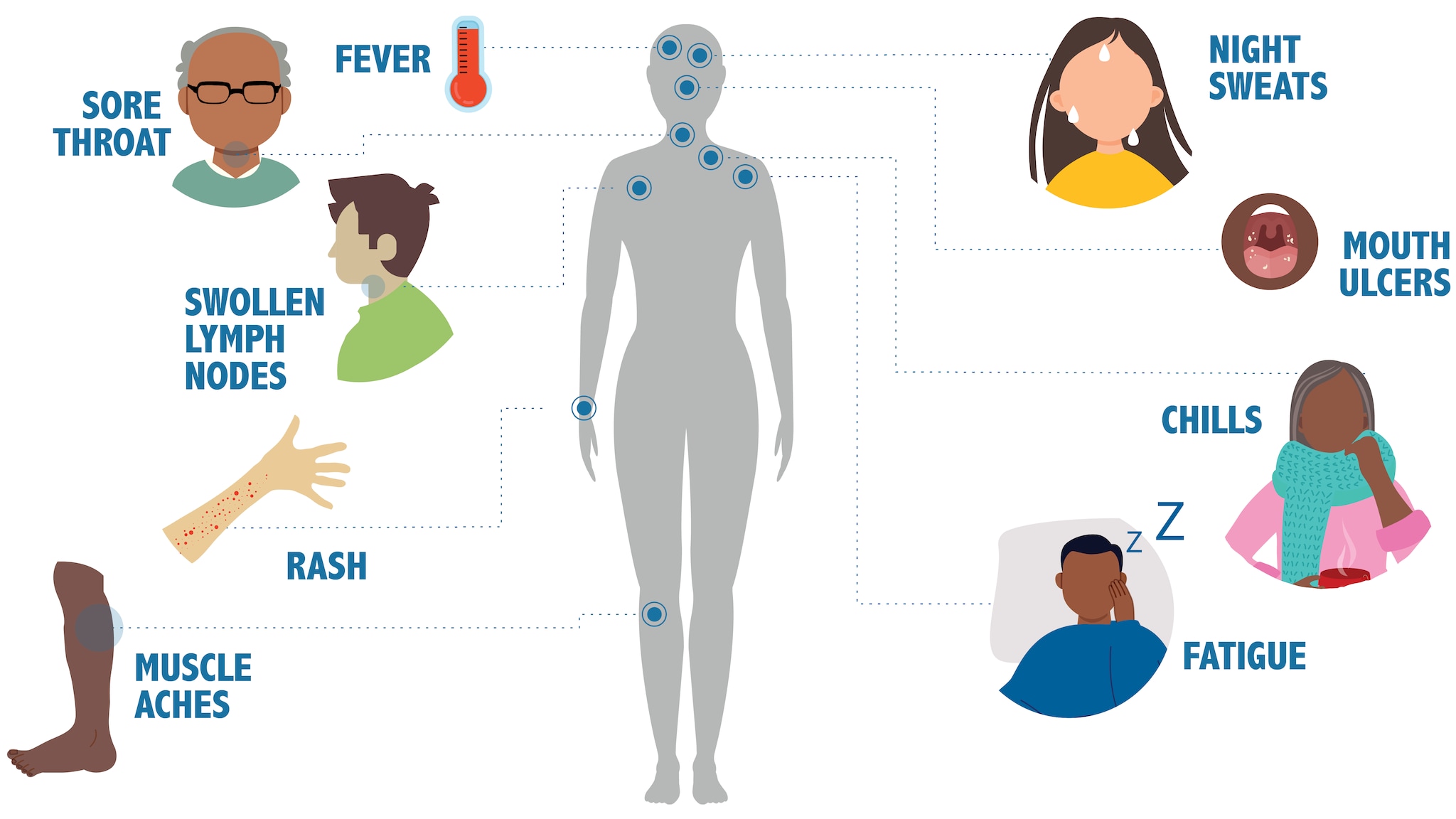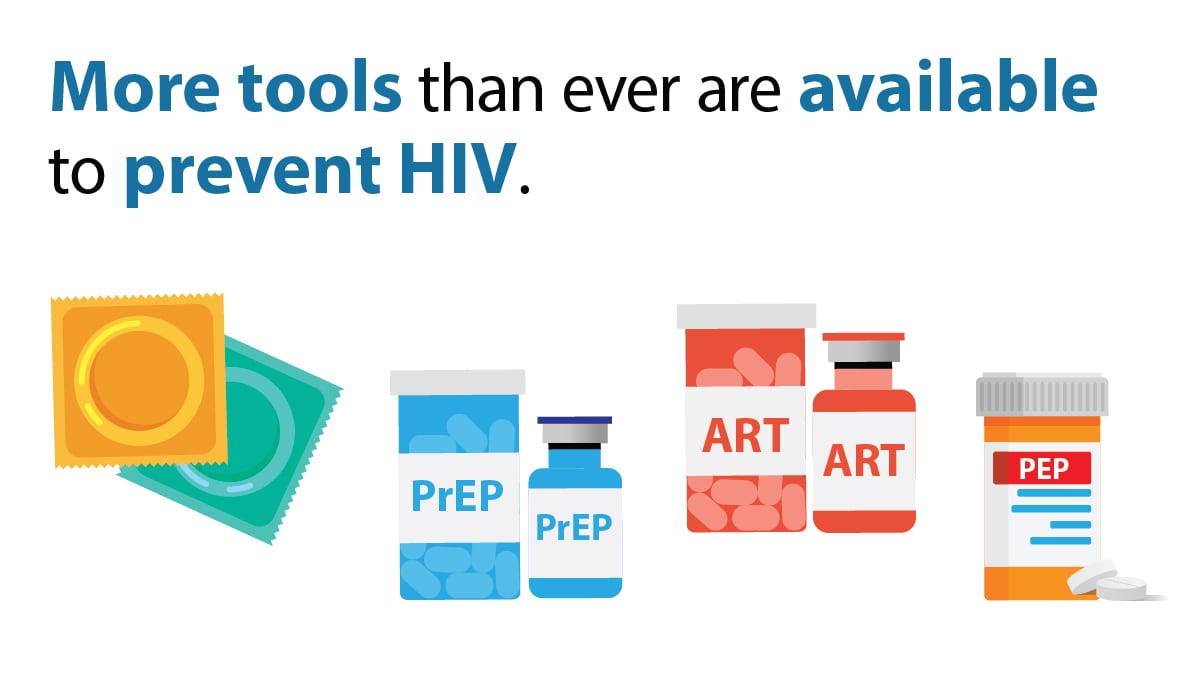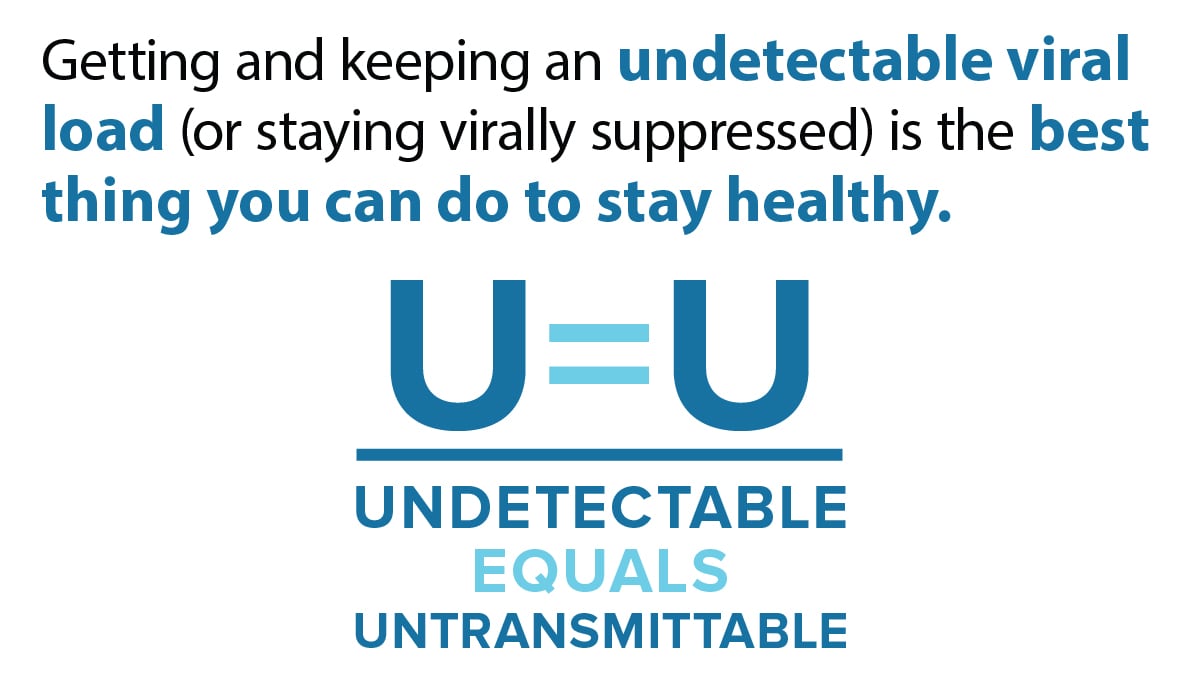Key points
- HIV is a virus that attacks the body's immune system.
- The only way to know if you have HIV is to get tested.
- There are many ways to prevent HIV, like using PrEP, PEP, condoms and never sharing needles.
- HIV treatment helps people live long, healthy lives and prevents HIV transmission.

Overview
HIV (human immunodeficiency virus) is a virus that attacks the body's immune system. Without treatment, it can lead to AIDS (acquired immunodeficiency syndrome).
There is currently no effective cure. Once people get HIV, they have it for life. But proper medical care can control the virus.
People with HIV who get on and stay on effective HIV treatment can live long, healthy lives and protect their partners.
Symptoms
Most people have flu-like symptoms within 2 to 4 weeks after infection. Symptoms may last for a few days or several weeks.
Having these symptoms alone doesn't mean you have HIV. Other illnesses can cause similar symptoms.
Some people have no symptoms at all. The only way to know if you have HIV is to get tested.

How it spreads
Most people who get HIV get it through anal or vaginal sex, or sharing needles, syringes, or other drug injection equipment.
Only certain body fluids can transmit HIV. These fluids include:
- blood,
- semen (cum),
- pre-seminal fluid (pre-cum),
- rectal fluids,
- vaginal fluids, and
These fluids must come in contact with a mucous membrane or damaged tissue or be directly injected into the bloodstream (from a needle or syringe) for transmission to occur.
Factors like a person's viral load, other sexually transmitted infections, and alcohol or drug use can increase the chances of getting or transmitting HIV.
But there are powerful tools that can help prevent HIV transmission.
Prevention
Today, more tools than ever are available to prevent HIV.
Prevention strategies include:
- Using condoms the right way every time you have sex.
- Never sharing needles, syringes, or other drug injection equipment.
- Using PrEP (pre-exposure prophylaxis) and PEP (post-exposure prophylaxis).
If you have HIV, there are many ways to prevent transmitting HIV to others, including taking HIV treatment to get and keep an undetectable viral load.

Testing
The only way to know your HIV status is to get tested. Knowing your status gives you powerful information to keep you and your partner(s) healthy.
There are many options for quick, free, and painless HIV testing. If your test result is positive, you can take medicine to treat HIV to help you live a long, healthy life and protect others. If your test result is negative, you can take actions to prevent HIV.
Treatment
HIV treatment (antiretroviral therapy or ART) involves taking medicine as prescribed by a health care provider. You should start HIV treatment as soon as possible after diagnosis.
HIV treatment reduces the amount of HIV in the blood (viral load). HIV treatment can make the viral load so low that a test can't detect it (undetectable viral load). If you have an undetectable viral load, you will not transmit HIV to others through sex. Having an undetectable viral load also reduces the risk of HIV transmission through sharing drug injection equipment, and during pregnancy, labor, and delivery.

How it progresses
When people with HIV don't get treatment, they typically progress through three stages. But HIV treatment can slow or prevent progression of the disease. With advances in HIV treatment, progression to Stage 3 (AIDS) is less common today.
Stage 1: Acute HIV Infection
- People have a large amount of HIV in their blood and are very contagious.
- Many people have flu-like symptoms.
- If you have flu-like symptoms and think you may have been exposed to HIV, get tested.
Stage 2: Chronic HIV Infection
- This stage is also called asymptomatic HIV infection or clinical latency.
- HIV is still active and continues to reproduce in the body.
- People may not have any symptoms or get sick during this phase but can transmit HIV.
- People who take HIV treatment as prescribed may never move into Stage 3 (AIDS).
- Without HIV treatment, this stage may last a decade or longer, or may progress faster.
- At the end of this stage, the amount of HIV in the blood (viral load) goes up and the person may move into Stage 3 (AIDS).
Stage 3: Acquired Immunodeficiency Syndrome (AIDS)
- The most severe stage of HIV infection.
- People receive an AIDS diagnosis when their CD4 cell count drops below 200 cells per milliliter of blood, or they develop certain illnesses (sometimes called opportunistic infections).
- People with AIDS can have a high viral load and may easily transmit HIV to others.
- People with AIDS have damaged immune systems.
- They can get an increasing number of other serious illnesses.
- Without HIV treatment, people with AIDS typically survive about three years.
